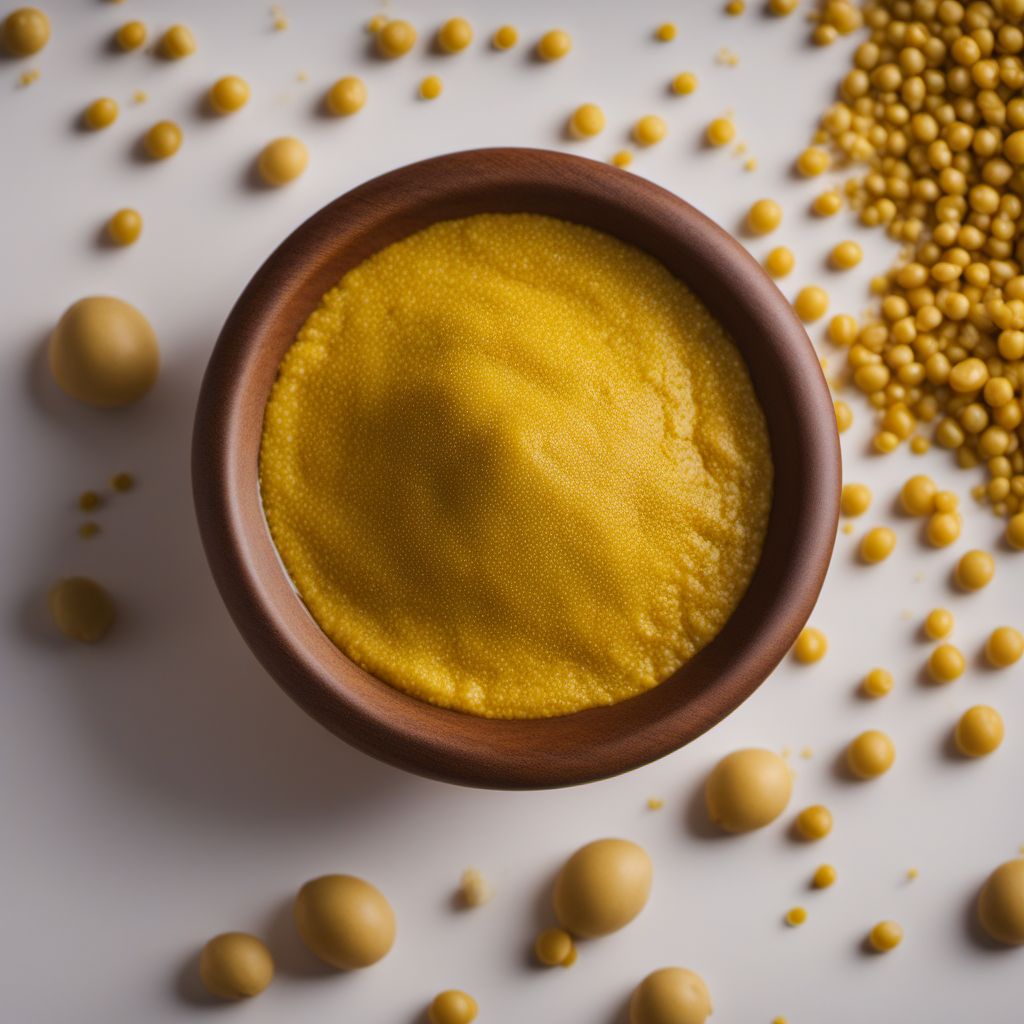
Ingredient
Mustard, mild
Mild Mustard: A Delicate Tang
Mild mustard is a smooth and creamy condiment with a pale yellow color. It has a delicate tang and a mild spiciness, making it suitable for those who prefer a milder flavor. It is commonly used as a spread, dip, or ingredient in dressings and sauces.
Origins and history
Mustard has a long history dating back thousands of years. It was first cultivated in ancient Egypt and later spread to other parts of the world. Mustard seeds were highly valued for their medicinal properties and were used as a spice and condiment in various cuisines. Today, mustard is produced and consumed globally, with different varieties and flavors available.
Nutritional information
Mild mustard is low in calories and fat, making it a healthier alternative to many other condiments. It contains small amounts of vitamins and minerals, including vitamin C and potassium. However, it can be high in sodium, so it should be consumed in moderation, especially for individuals on a low-sodium diet.
Allergens
Mustard may contain allergens such as mustard seeds and vinegar, which can cause allergic reactions in some individuals. It is also not suitable for those with mustard seed allergies.
How to select
When selecting mild mustard, look for a brand or variety that suits your taste preferences. Some mild mustards may have additional flavors or ingredients added, so read the labels carefully if you have any dietary restrictions or preferences.
Storage recommendations
To maintain the freshness and quality of mild mustard, store it in the refrigerator after opening. Keep it tightly sealed to prevent air and moisture from affecting its flavor. Check the expiration date and discard if it has passed.
How to produce
Mild mustard can be produced at home using basic ingredients like mustard seeds, vinegar, and spices. It requires minimal equipment and can be customized to suit individual tastes. There are many recipes and tutorials available online for homemade mustard.
Preparation tips
Mild mustard can be used as a spread on sandwiches, burgers, or hot dogs. It can also be mixed into dressings, marinades, or sauces to add a subtle tang and creaminess. Additionally, it can be used as a dip for pretzels, vegetables, or chicken nuggets.
Substitutions
Dijon mustard, honey mustard
Culinary uses
Mild mustard is commonly used in sandwiches, salad dressings, marinades, and as a condiment for grilled meats or sausages.
Availability
Mild mustard is widely available in supermarkets, grocery stores, and specialty food stores. It is produced by various brands and can be found in both jars and squeeze bottles.
More ingredients from this category
Recipes using Mustard, mild » Browse all

Dutch-Inspired Caesar Salad
Tulip Caesar Salad: A Dutch Twist on a Classic American Dish

Grilled Spiced Fish with Tangy Citrus Glaze
Northeastern American Grilled Fish Delight

Bangladeshi Spiced Bagel Toast
Savory Fusion: Bangladeshi Spiced Bagel Toast

General Tso's Chicken à la Française
Poulet Général Tso à la Française

Bulgogi à la française
Bulgogi with a French twist

Wisconsin-style Seafood Salad with Oranges
Lake-inspired Seafood Delight with Zesty Citrus Twist

Swedish Christmas Ham with Mustard Glaze
Golden Glazed Julskinka: A Festive Swedish Delight

Dutch-style Hot Pot
Dutch Delight Hot Pot

North Dakota Rice Salad
Harvest Delight Rice Salad

Dutch-Style Barbecue Ribs
Smokey Dutch Delight: Barbecue Ribs with a Dutch Twist

Ultimate Loaded Delight: The Mega Fat Sandwich
The Epic Gastronomic Journey: Unleashing the Mega Fat Sandwich

Spring Rolls
Délicieux Rouleaux de Printemps (Delicious Spring Rolls)
